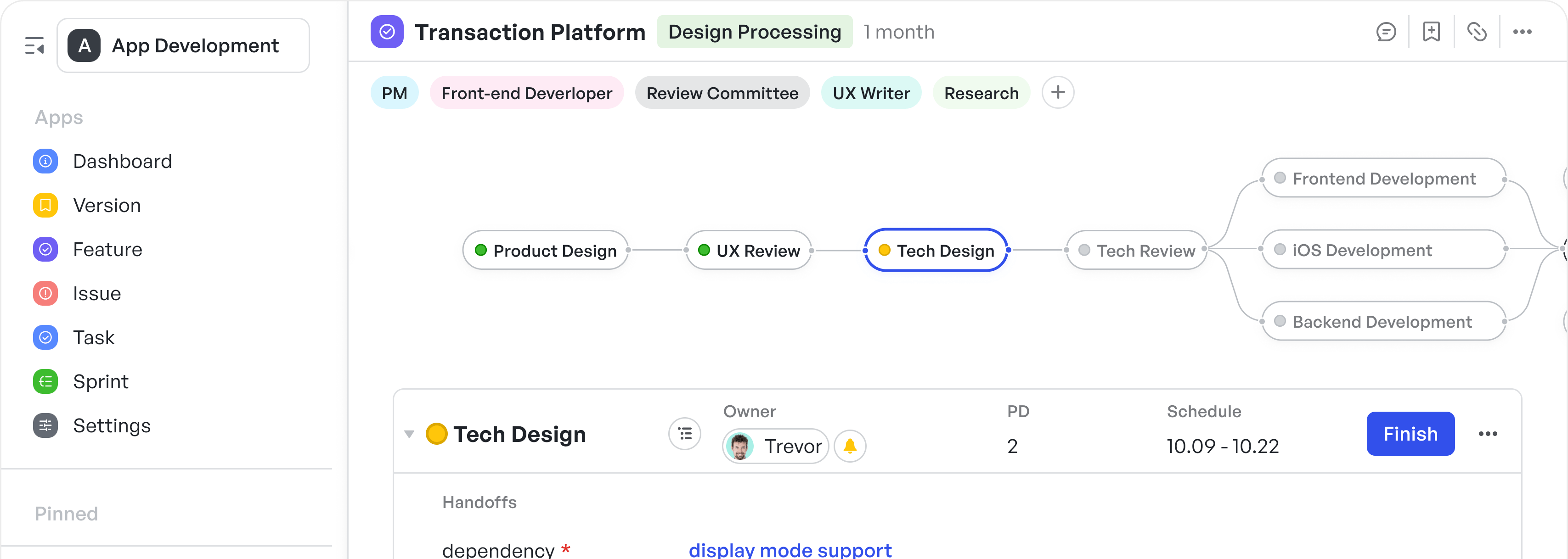In the contemporary realm of software research and development (R&D), the Agile methodology has become synonymous with adaptability and rapid response to change. Adopting Agile practices in distributed teams poses unique challenges that revolve around coordination, culture, and communication. This article will explore the agile R&D process, addressing the challenges of implementing Agile in distributed R&D teams. It will also highlight best practices and how Meegle can facilitate agile management in R&D projects.
The Importance of Agile in R&D Projects
Adopting Agile methodologies in R&D software development projects brings about significant advantages, crucial for navigating the uncertainties and fast-paced nature of research and development. Here are the key benefits of Agile in R&D:
- Flexibility and Adaptability: Agile's adaptable framework allows teams to quickly adjust to new insights or changes, essential in the evolving landscape of R&D projects.
- Enhanced Collaboration: Regular communication and feedback loops within Agile practices foster a collaborative environment that is ideal for creative problem-solving in R&D.
- Continuous Improvement: Agile encourages iterative review and refinement, promoting continuous improvement of both the project and the development process, which is vital in exploratory R&D settings.
- Frequent Deliverables: Delivering work in short sprints enables early and frequent testing of hypotheses and functionalities, crucial for timely validations in R&D projects.
- Risk Management: The iterative nature of Agile facilitates early detection and mitigation of risks, reducing potential setbacks in R&D endeavors.
- Stakeholder Satisfaction: Keeping stakeholders involved with regular updates ensures the project remains aligned with expectations, enhancing satisfaction and support for R&D initiatives.
- Resource Efficiency: Agile prioritizes work that delivers the most value, ensuring efficient allocation and use of resources, a critical aspect in budget-sensitive R&D projects.
- Increased Visibility: The transparency afforded by Agile methods offers stakeholders clear insights into project progress and challenges, allowing for swift and informed decision-making.
Challenges of Implementing Agile in Distributed R&D Teams
Communication Barriers in Distributed Agile R&D Teams
Geographic separation and time zone differences can hinder real-time collaboration, an essential aspect of the agile R&D process.
Cultural Diversity in Distributed R&D Projects
Cultural differences within distributed teams can lead to misunderstandings in work practices and Agile methodology expectations.
Ensuring Alignment in Agile Distributed Teams
Maintaining alignment across geographically separated teams is difficult. Consistent goals and Agile workflows must be reinforced to ensure project success in R&D projects.
Finding the Right Tools for Agile R&D Teams
Identifying tools that work effectively across time zones and locations is crucial for the software R&D in Agile approach.
You may also interested in
Best Practices for Agile R&D Process in Distributed Teams
Foster a Unified Agile Culture Across R&D Teams
Develop a cohesive Agile culture that promotes collaborative work and continuous improvement, regardless of location. Encourage practices and values that promote Agile principles such as collaborative discovery, transparency, and continuous improvement.
Prioritize Effective Communication
Incorporate tools like video conferencing and collaboration platforms to maintain daily stand-ups, sprint planning, and retrospectives.
Adopt the Right Tools to Support Agile R&D Process
Choose project management tools that support the Agile R&D process across distributed teams. These should allow for backlog management, real-time collaboration, and sprint tracking.
Focus on Regular Integration and Delivery
Emphasize frequent software delivery and regular code integration to minimize issues and maintain momentum in Agile R&D projects.
Build Trust and Ownership in Distributed R&D Teams
Encourage accountability within the team and foster trust so that team members are empowered to meet their project goals effectively.
How Meegle Supports Agile Practices in Distributed R&D Teams
Meegle is designed to help distributed R&D teams overcome the challenges of implementing the agile R&D process. Its features are crafted to support Agile methodologies and enhance collaboration across locations.
Cloud-Based Collaboration for Agile Distributed Teams
With Meegle, teams can collaborate in real-time through cloud-based infrastructure, ensuring everyone has access to the same information at all times.This facilitates a more collaborative and inclusive work environment, mirroring the core Agile value of individuals and interactions over processes and tools.
Agile Management Features in Meegle for R&D Projects
- Backlog Management: Prioritize tasks effectively.
- Sprints and Iterations: Track and adjust sprints as needed.
- Kanban Boards: Visualize team workflow to avoid bottlenecks.
- Continuous Integration/Delivery Tools: Facilitate frequent code delivery in line with Agile principles.
250px|700px|reset
加载中,请稍后
Agile Reporting and Analytics
Meegle provides real-time updates, sprint reports, velocity tracking, and burndown charts—critical for tracking the progress of distributed Agile R&D projects.
250px|700px|reset
加载中,请稍后
Customizable Workflows for Agile Frameworks
Whether using Scrum, Kanban, or a hybrid model, Meegle adapts to various Agile frameworks, making it ideal for any distributed R&D team.
250px|700px|reset
加载中,请稍后
Conclusion
Successfully adopting Agile practices in distributed software R&D teams requires a blend of strong communication protocols, a unifying culture, and a reliable set of collaborative tools. While challenges are ever-present, embracing these best practices ensures that teams can be as effective locally as they are globally.
With Meegle, distributed teams have a robust platform at their disposal that supports and enhances Agile practices through its comprehensive suite of features. By leveraging such tools, distributed software R&D teams can attain the flexibility, responsiveness, and collaborative spirit that Agile methodologies promise, thus driving innovation and creating value in a competitive, ever-changing market.
Get an easy start with the Meegle Agile development template!
FAQs
- What is the Agile R&D process?
The Agile R&D process involves applying Agile methodologies to manage and execute research and development projects. It focuses on iterative development, flexibility, collaboration, and continuous improvement, allowing teams to adapt to changes and deliver innovative solutions efficiently.
- How can Agile be applied to distributed R&D teams?
Agile can be applied to distributed R&D teams by using digital collaboration tools for communication and project management, setting clear roles and responsibilities, scheduling regular virtual meetings for iteration planning and reviews, and maintaining transparent documentation to keep all team members aligned.
- What are the best practices for Agile in R&D projects?
Best practices for Agile in R&D projects include maintaining a flexible project scope to accommodate learning and changes, fostering open communication and collaboration within the team, prioritizing tasks to deliver high-value features first, and engaging stakeholders regularly for feedback and adjustments.
- Does agile work for distributed teams?
Yes, Agile works for distributed teams. With the right tools and practices in place—like regular communication, effective use of collaboration platforms, and adherence to Agile ceremonies—distributed teams can successfully implement Agile methodologies, promoting flexibility, efficiency, and continuous improvement.





